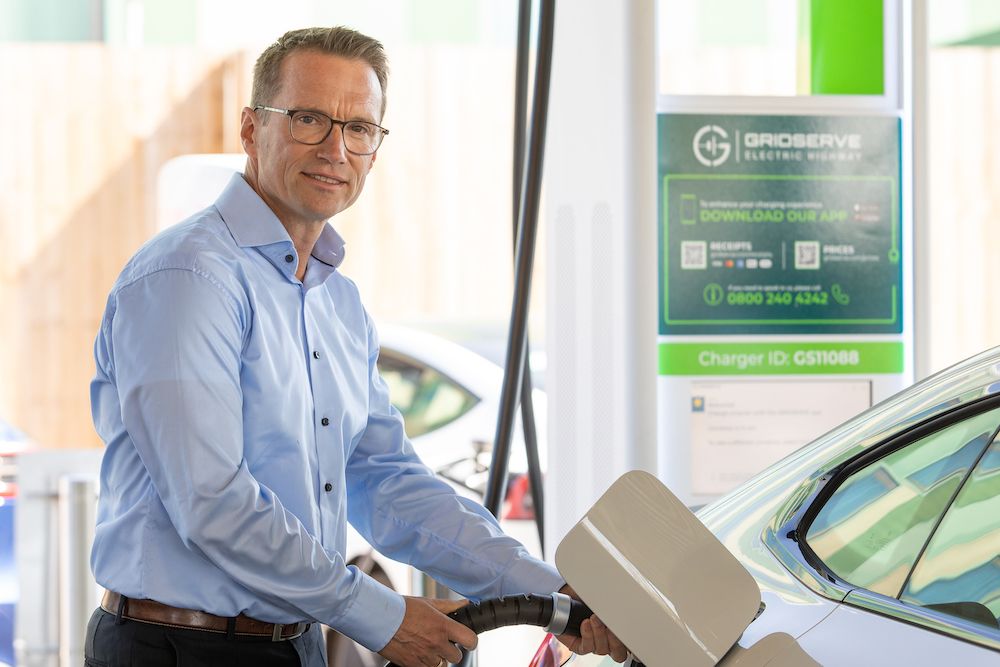Transport + Energy speaks to Matt Pretorius of Octopus Electroverse about the business and its plans for the future.
Could you please tell us about your company and 2025 plans?
Absolutely! At Octopus Electroverse, we’re all about making fleet electrification as simple as possible. We launched Electroverse for Business in 2024 with one clear mission: to help businesses switch to electric.
In 2025, we’re focused on growing that support even more. Our all-in-one fleet solution covers public charging, fuel payments, and everyday driver spending – all in one place. One of the big things we’ve introduced is the Electroverse Business Payments card (built with VISA 2.0). It goes beyond just charging and lets drivers from mixed-fuel fleets pay for fuel, food, car washes, and more – all from one card.
Everything connects to our very easy-to-use fleet platform, where managers can keep track of charging, spending, receipts, and reports. There are no fixed contracts, flexible ways to pay, access to Europe’s largest EV charging network (Electroverse), and discounts, including Plunge Pricing, which offers up to 45% off charging when there’s loads of renewable energy on the grid.
So, whether your fleet is already electric or just starting to make the electric switch, we’re here to make the whole thing run smoother and smarter.
Electroverse meets businesses where they are and helps them get to where they want to be.
Could you provide some examples of collaboration/partnership work
Octopus Fleet Solutions is growing its support for all types of electric vehicle charging, such as public, home, public, workplace, and depot, through a more consultative, joined-up approach. We’re already working with Plug Me In and will soon be partnering with more companies to help fill key gaps in the market and make charging (and fleet electrification!) easier and more accessible for our customers.
And if you want to talk partnerships, look no further than the Electroverse charging network: over 1,000 partnered charging operators all on one app and map!
How do you see the fleet space changing in the next five years?
I see the fleet space changing a lot over the next five years, especially around fleet electrification and charging. It’s going to get smarter and more connected to how fleets actually operate day to day. Charging won’t be this separate concept; it’ll just be part of how routes are planned, costs are tracked, and vehicles are managed.
Public charging is going to grow fast. There’ll be way more chargers, and they’ll be quicker and easier to access. We’re already in a reality where individual drivers don’t need five different apps or cards – so, this is the next logical step for fleets: just one system that works everywhere.
Home and depot charging will also get better. More drivers will be able to charge at home with automatic reimbursements, and depots will use smarter software to manage when and how vehicles charge, based on things like energy prices and grid demand.
Pricing will evolve to be more dynamic, too. Fleets will save money by charging when there’s lots of renewable energy available or when the grid’s quieter. And with better data and AI tools, fleet managers will get smarter insights to help them cut costs and avoid downtime.
Payment and expense tracking will be easier as well. One card or app will cover everything from charging to fuel to food, and it’ll all feed into one platform. And because not every fleet will be fully electric right away, there will be more embedded tools that help manage mixed fleets, too.
Overall, I think charging’s going to become faster, cheaper, and way less of a headache, which is great news for everyone managing or driving in a fleet.
What are the biggest challenges for fleet operators in the UK, and how can these issues be overcome?
One of the biggest challenges fleet operators in the UK face right now is navigating the switch to electric. There’s a lot to think about, like making sure drivers can charge reliably with the option of flexibility, understanding the costs, and figuring out how to manage everything day to day without adding more complexity.
Charging infrastructure still needs some attention, especially for drivers who don’t have access to a depot or home charger. That can create real pressure on operations. Currently, there is still a need for more on-street chargers to be installed, for use as an alternative to home charging.
Cost is another big concern. Electric vehicles can save money in the long run, but upfront investment and unpredictable charging costs can be a barrier, especially when budgets are tight and businesses are still running mixed fleets.
The key to overcoming these challenges is simplicity and flexibility. That’s where tools like Octopus Electroverse for Business come in. We give fleets access to one platform for public and home charging, plus a business payment card that covers everything from fuel to food, all tracked in one place. That means less admin, more visibility, and better control.
We also offer flexible pricing, no fixed contracts, and smart tools that help fleets charge when it’s cheapest, like during times of high renewable energy. And because we support both electric and non-electric vehicles, we make it easier for businesses to make the transition at a feasible pace.
So in short, the challenges are real, but with the right tools and support, they’re absolutely solvable.
What, specifically relating to the area of fleet electrification, would you like to see from the UK Government and local government in terms of policy within the next five years?
- Speed up and simplify the process for on-street home charging
One of the biggest challenges I see, especially for fleet drivers who park at home but don’t have a driveway, is the difficulty of getting permission to install something as simple as a cable gully. Right now, it can cost around £350 just for planning, then around £650 for the gully installation, and another £900 for the charger itself. That’s a huge barrier, especially when you’re trying to electrify fleets at scale. I’d really like to see the planning process made faster, more consistent across councils, and much more affordable. We need solutions like Kerbo Charge to be easier for people to access, particularly for those living in terraced housing or flats. - Expand the number of on-street chargers in residential areas
There’s still a massive gap when it comes to on-street public charging, especially in places where off-street parking just isn’t an option. I’d like to see local and national governments take a much more proactive approach to rolling out on-street charging infrastructure, especially in residential areas. That means not just “more chargers”, but smarter deployment that actually matches the needs of real drivers. - Bring VAT on public charging in line with home charging
Right now, public charging is taxed at 20% VAT, while home charging is only 5%. That creates a pretty clear inequality, and it hits those who rely on public infrastructure the hardest, often the same people who don’t have driveways or dedicated parking. For fleets, it also makes it harder to control costs when some drivers can charge more cheaply than others. Reducing the VAT on public charging to 5%, to match home rates, would make a meaningful difference.
Matt Pretorius is Head of Fleet Solutions at Octopus Electroverse. He will be speaking at the upcoming T+E Fleet Electrification Forum on 9 July at Warwick Conferences. For more about the event click here.








